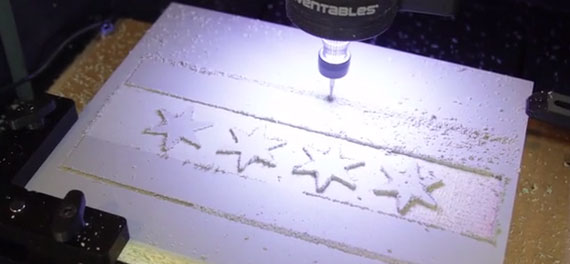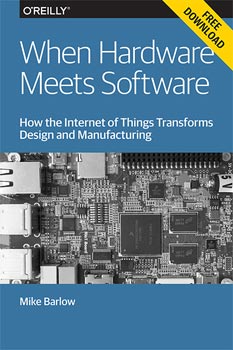"democratization of hardware" entries

Hardware start-ups now look a lot like software start-ups
Joi Ito on the evolution of manufacturing.
Editor’s note: this interview with Joichi Ito is an excerpt from our recent report, When Hardware Meets Software, by Mike Barlow. The report looks into the new hardware movement, telling its story through the people who are building it. For more stories on the evolving relationship between software and hardware, download the free report.
Joichi Ito is the director of the MIT Media Lab. Ito, who is also co-chair of the O’Reilly Solid Conference, recalls sending a group of MIT students to Shenzhen so they could see for themselves how manufacturing is evolving. “Once they got their heads around the processes in a deep way, they understood the huge differences between prototyping and manufacturing. Design for prototyping and design for manufacturing are fundamentally different,” says Ito. The problem in today’s world, according to Ito, is that “we have abstracted industrial design to the point where we think that we can just throw designs over a wall” and somehow they will magically reappear as finished products.The trip to Shenzhen helped the students understand the manufacturing process from start to finish. “In Shenzhen, they have a $12 phone. It’s amazing. It has no screws holding it together. It’s clearly designed to be as cheap as possible. It’s also clearly designed by someone who really understands manufacturing and understands what consumers want.”
Ito also sees a significant difference between what’s happening on the factory floors in Shenzhen and the maker movement. “We’re not talking about low-volume, DIY manufacturing,” he says. Instead, Ito’s students are working through the problems and challenges of a real, live paradigm shift — the kind of gut-wrenching upheaval described in Thomas S. Kuhn’s seminal book, The Structure of Scientific Revolutions. From Kuhn’s point of view, a paradigm shift isn’t a cause for celebration or blithe headlines — it’s a sharp and unexpected blow that topples old theories, wrecks careers, and sweeps aside entire fields of knowledge. Read more…

Hardware is an elusive constraint on user experience
Andrew “bunnie” Huang on understanding the interplay between software, hardware, and the existing supply chain.
Editor’s note: this interview with Andrew “bunnie” Huang is an excerpt from our recent report, When Hardware Meets Software, by Mike Barlow. The report looks into the new hardware movement, telling its story through the people who are building it. For more stories on the evolving relationship between software and hardware, download the free report.
Andrew “bunnie” Huang has a Ph.D. in electrical engineering from MIT, but he is most famous for reverse engineering the Xbox, establishing his reputation as one of the world’s greatest hardware hackers. He sees an evolving relationship between hardware and software.“It used to be that products were limited solely by the capability of their hardware. Early radios, for example, had mechanical buttons that acted directly on the physics of the receiver,” says Huang. “As hardware becomes more capable, the user experience of the hardware is more dictated by the software that runs on it. Now that hardware is ridiculously capable — you basically have supercomputers in your pockets that cost next to nothing — pretty much the entire user experience of the product is dictated by the software. The hardware simply serves as an elusive constraint on the user experience.”
Hardware is “a cage,” says Huang, and good software developers learn to work within the constraints of the hardware. “When I work with programmers on new products, I take the first prototype, put it on the desk and I say, ‘Welcome to your new cage.’ That’s the reality. There’s a hard wall. But we try to build the cage big enough so there are options for programmers. A quad core Android phone with a gigabyte of memory is a pretty big cage. Sometimes when programmers feel constrained, they’re just being lazy. There’s always more than one way to skin a cat in the software world.” Read more…

Intoxicating machines
The revolutionary thing about desktop machines is that they'll make experimentation easier.

Cropped screenshot of Carvey. Source: the Carvey Kickstarter campaign.
“Mr. Frankel, who started this program, began to suffer from the computer disease that anybody who works with computers now knows about,” [Richard] Feynman later explained. “The trouble with computers is you play with them.”
— George Dyson, describing the beginning of the Manhattan Project’s computing effort in Turing’s Cathedral.
I’ve been reading George Dyson’s terrific history of the early development of the digital computer, and the quote above struck me. Even when they were little more than room-sized adding machines that had to be painstakingly programmed with punchcards, computers offered an intoxicating way to experiment. Most programmers can probably remember their first few scripts and the thrilling feeling of performing millions of operations in seconds. Computers let us take some abstracted human process and repeat it quickly, at almost no cost, with easy modification along the way. Read more…
